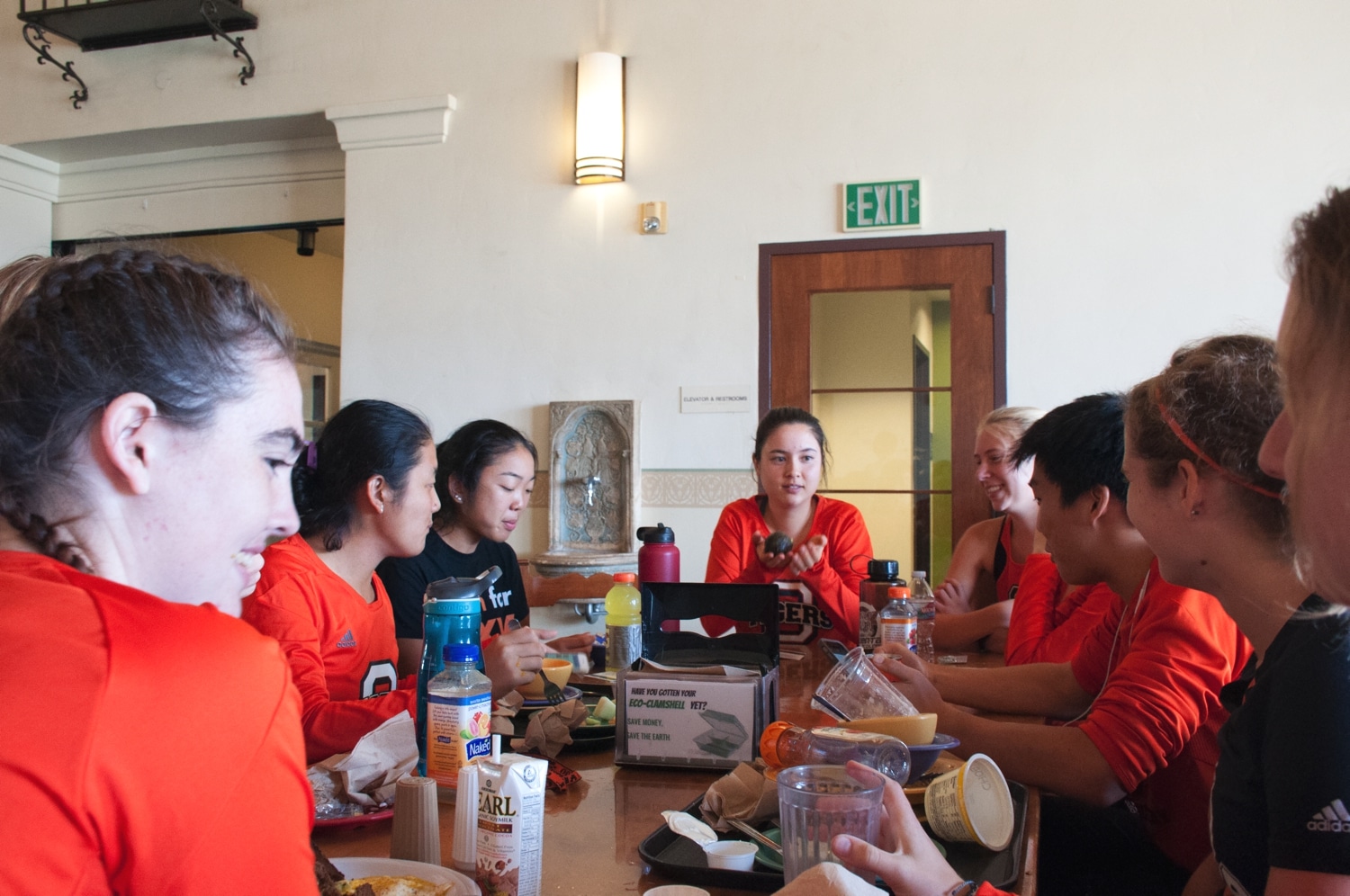
Whether it is meals before and after practice or preparing for a game or meet, the dietary choices of many student athletes require a wide variety of options and a strict adherence to a specific plan.
Reid Gibbs (junior), short stop for Occidental’s baseball team, said he avoids sugar more for his own health rather than for maximizing his athletic performance. His open-ended diet gives him few restrictions to find appropriate meals on campus.
“I don’t really think at all about what I eat. I just try to avoid sugar in general,” Gibbs said.
However, athletes with more specific diets have to use some creativity with Campus Dining.

“Last year, I felt really slow and sluggish, I wasn’t in good shape,” Jeevin Sandhu (junior), guard for Occidental’s men’s basketball team, said. “[I] tried to do a vegan diet, dropped eight pounds, then gained it back when I got back on meat.”
Sandhu said he was sidelined during the tail end of the 2016–17 season with a hip injury. It left him inactive and, in tandem with his slow metabolism, left him 15 pounds heavier than he wanted to be for the season.
When Sandhu went back home to Oakland, Calif. after the 2017 spring semester, he went on a five-day juice cleanse and met with a nutritionist to design a personalized off-season diet plan. After testing Sandhu’s body mass index, caloric intake and metabolism, his nutritionist laid out daily macro-nutrient quotas. Sandhu said he uses an app called Whole Body Reboot to make sure his servings have the appropriate levels of starches, grains, fruits, proteins and fat.
“It isn’t hard to find healthy food on campus. The easiest thing is the grill,” Sandhu said.
With a diet that emphasizes monitoring serving sizes, Sandhu’s said his options are more limited.
“I might go to the Cooler for chicken and vegetables but Homestyle isn’t as transparent with what is in it. Pasta bar is good because you can control what you put in it but they aren’t transparent with serving amounts,” Sandhu said.
Sandhu, in an effort to better judge serving sizes, bought measuring cups so he could enter more accurate information into his diet app.
“I bought them after learning that a large cup of oatmeal at the Marketplace has three times the amount of grain I need,” Sandhu said.
Sandhu is also tasked with framing his diet around his offseason workout schedule. The basketball team practices at 6:45 a.m. during the week, 45 minutes before the Marketplace or Cooler open. Sandhu noticed that the lack of access to pre-practice food has made the team heavily reliant on sports bars for breakfast.
Olivia Adelman (sophomore) runs the 400 and 800 for track and field in the spring. Currently in the offseason, her diet shifts as soon as the season begins.
“I become much kinder to my body as I eat more healthy foods and cut out all sweets … it becomes more of a habit and I know what times I can eat in order to feel great at practice,” Adelman said.
Adelman, a self-proclaimed picky eater, said her favorite place to eat on campus is the pasta bar because she likes choosing exactly what she is eating.
Oliver Artiga (junior) runs cross country in the fall and track and field in the spring. Artiga, like Adelman, cites the pasta bar as his favorite place on campus for a meal. He does not count calories but said he is careful with what he puts into his body. Artiga tries to make sure that he eats a small plate of salad with breakfast and lunch, half a plate of carbohydrates and a serving of protein with each meal.

Artiga clocks between 45–50 miles a week with workouts or races on Tuesdays and Fridays. He eats at 8 a.m. before his 8:30 a.m. class, eats lunch at noon after his third class, then eats dinner with the team at 7 p.m. after practice.
“I think the campus offers a variety of great foods, but I still like to go out and eat. I think especially this year I’ve focused on going out more and eating from the neighboring restaurants to keep things interesting so I’m not eating the same meal over and over again,” Artiga said.
About once a month, Campus Dining reviews suggestions for improvement and responds on their blog, explaining which changes are feasible as well as their current policies and food providers. Feedback can be submitted through their online suggestion box.
![]()



































